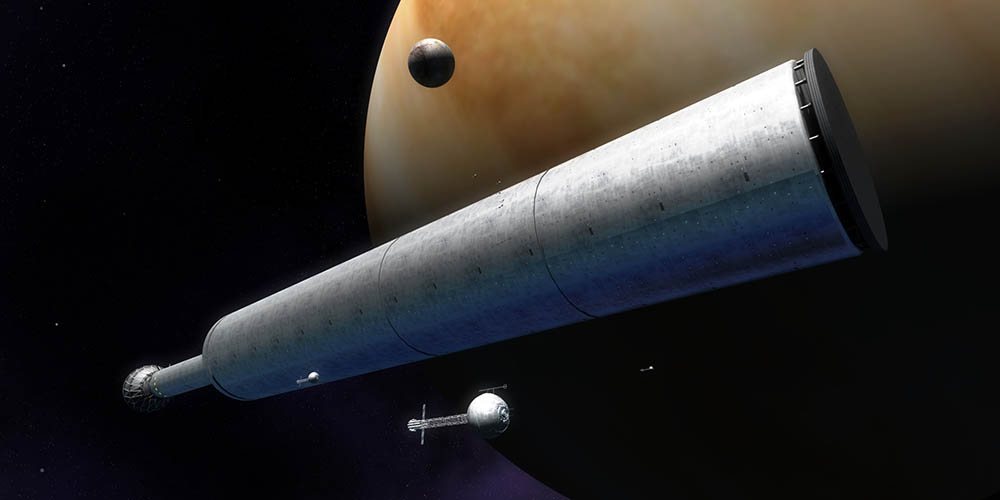Illustration of a “wet” world ship. Image credit: Adrian Mann.
World ships are hypothetical, large, self-contained spacecraft for crewed interstellar travel, taking centuries to reach other stars. Due to their crewed nature, size, and long trip times, the feasibility of world ships faces an additional set of challenges compared to interstellar probes. Despite their emergence in the 1980s, most of these topics remain unexplored. The article World ships: Feasibility and Rationale revisits some of the key feasibility issues of world ships.
First, definitions of world ships from the literature are revisited and the notion of world ships positioned with respect to similar concepts such as generation ships.
Second, the key question of population size is revisited in light of recent results from the literature.
Third, socio-technical and economic feasibility issues are evaluated.
Finally, world ships are compared to potential alternative modes of crewed interstellar travel. Key roadblocks for world ships are the considerable resources required, shifting its economic feasibility beyond the year 2300, and the development of a maintenance system capable of detecting, replacing, and repairing several components per second. The emergence of alternative, less costly modes of crewed interstellar travel at an earlier point in time might render world ships obsolete.


A worldship is basically a traveling space settlement in outer solar system territory.
Most parameters considered, especially those referring to population are inadequate. By the time that our society will achieve interstelar travel using worldships, humans may not be the same as today. They will be web connected through implants, their mind uploadable in hard disks and their lifespan practically unlimited through constant rejuvenation process.
Maybe it will make more sense to send mind uploaded AIs that humans to prepare the future human arrival
It is true that it might someday be possible to modify or augment humans. That said, if you read ancient texts such as the Bible you quickly realize that humans have not changed in 5000 years. We know that humans domesticated animals during those millennia. But selective breeding of humans in order to create some desirable attribute (telekinesis, super strength, water breathing) has never been systematically attempted. There might be a built in revulsion to performing such customization that will ultimately prevent humans from accepting implants (especially those that might affect the way we think or process reality). A good exploration of the unanticipated effects of such implants can be found in Season 7, Episode 5 “Revisions” of the television program Stargate SG-1 found on the Hulu streaming service. In fact, the very next episode (#6) “Lifeboat” explores the idea of uploading minds onto computers for storage during the long voyage. Regardless, when studying worldships it is instructive to recognize the limits imposed by carrying regular imperfect humans. Such limits may provide guidance for careful genetic modifications that make worldships someday viable.